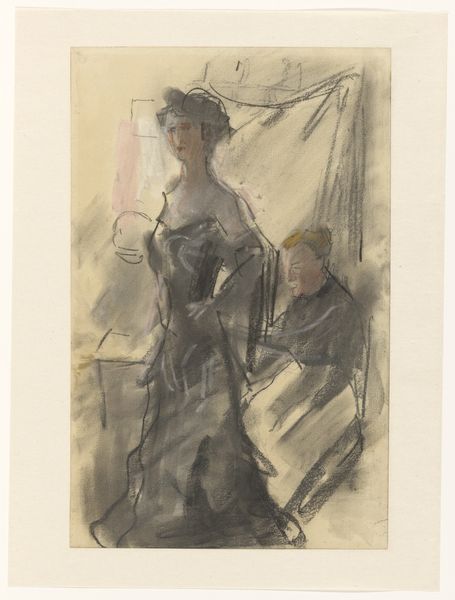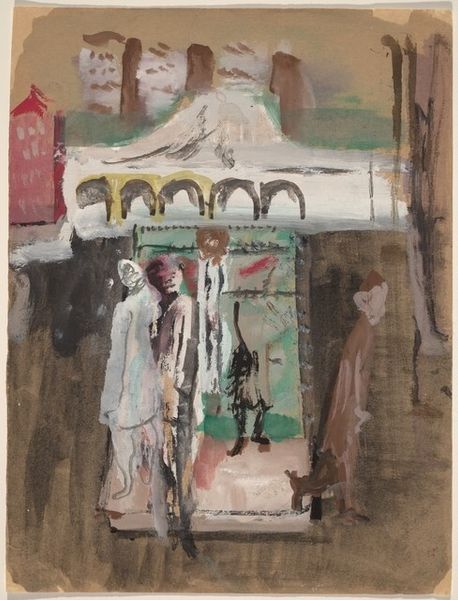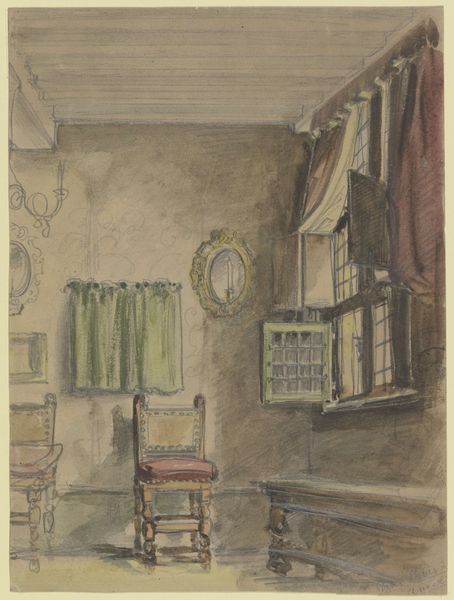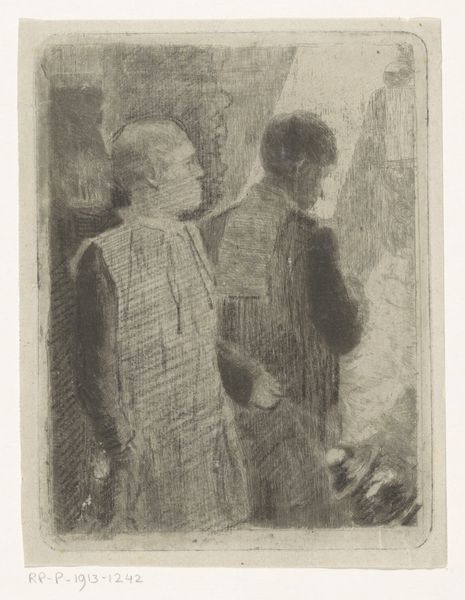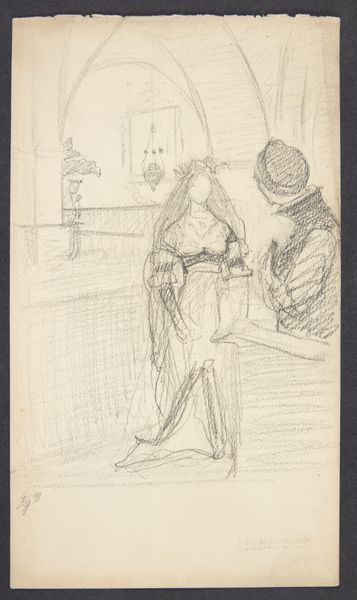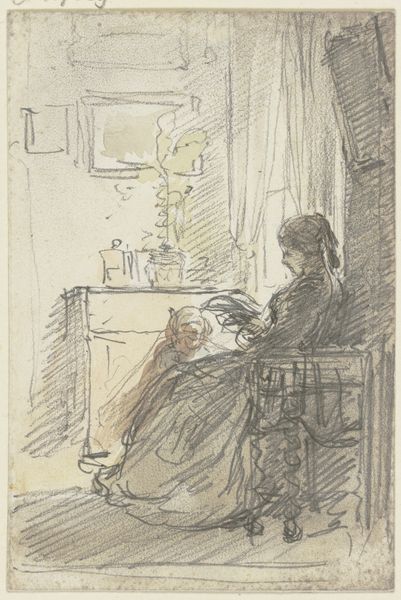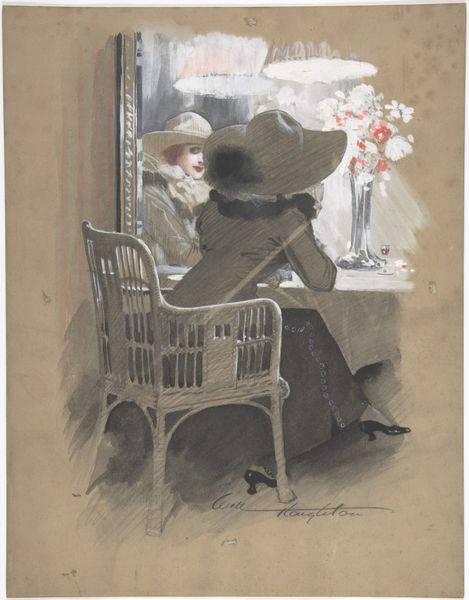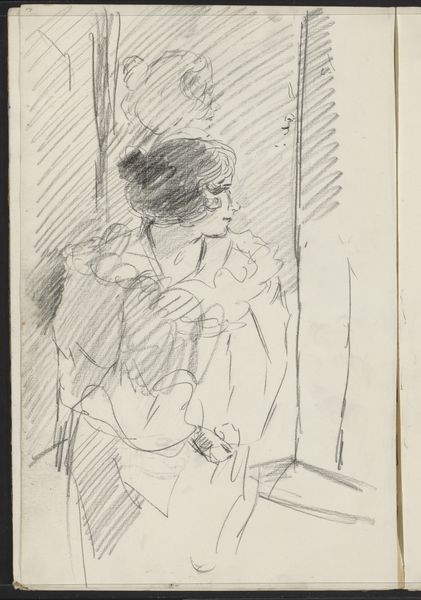
Dimensions: height 455 mm, width 286 mm
Copyright: Rijks Museum: Open Domain
Editor: This watercolor painting, "Dame in groene japon staande voor een spiegel," was created sometime between 1874 and 1918 by Martinus van Andringa. I find it interesting how the painting captures a moment of reflection, literally. What elements of the social or production history of this watercolor capture your eye? Curator: The most compelling aspect is the readily accessible nature of watercolor itself. It speaks to a specific form of artistic labor. Think about it: watercolor, unlike oil painting, allows for quicker execution, and cheaper acquisition. Was this painting commissioned? Who bought and consumed works of this nature and price range? Editor: So you're thinking about who would have purchased and displayed something like this? The rising middle class? Curator: Exactly. Watercolors held a certain accessibility. Were these works framed and hung? Placed in portfolios? The level of finish could impact modes of display, suggesting a kind of individualized consumption outside formal museum spaces. How does its likely mode of consumption differ from a larger scale work intended for a salon, for instance? The labor and material input shapes not only the object itself, but also its potential audience. Editor: I hadn't considered the economic impact of choosing watercolor. The piece becomes more about democratization through artistic mediums than just capturing a simple reflection. Curator: Precisely! And that opens so many questions, right? About production, about availability, and ultimately, about who gets to participate in art-making and consumption. Editor: Right, viewing art this way completely reframes our relationship to its economic life. Thanks, that's super helpful.
Comments
No comments
Be the first to comment and join the conversation on the ultimate creative platform.

